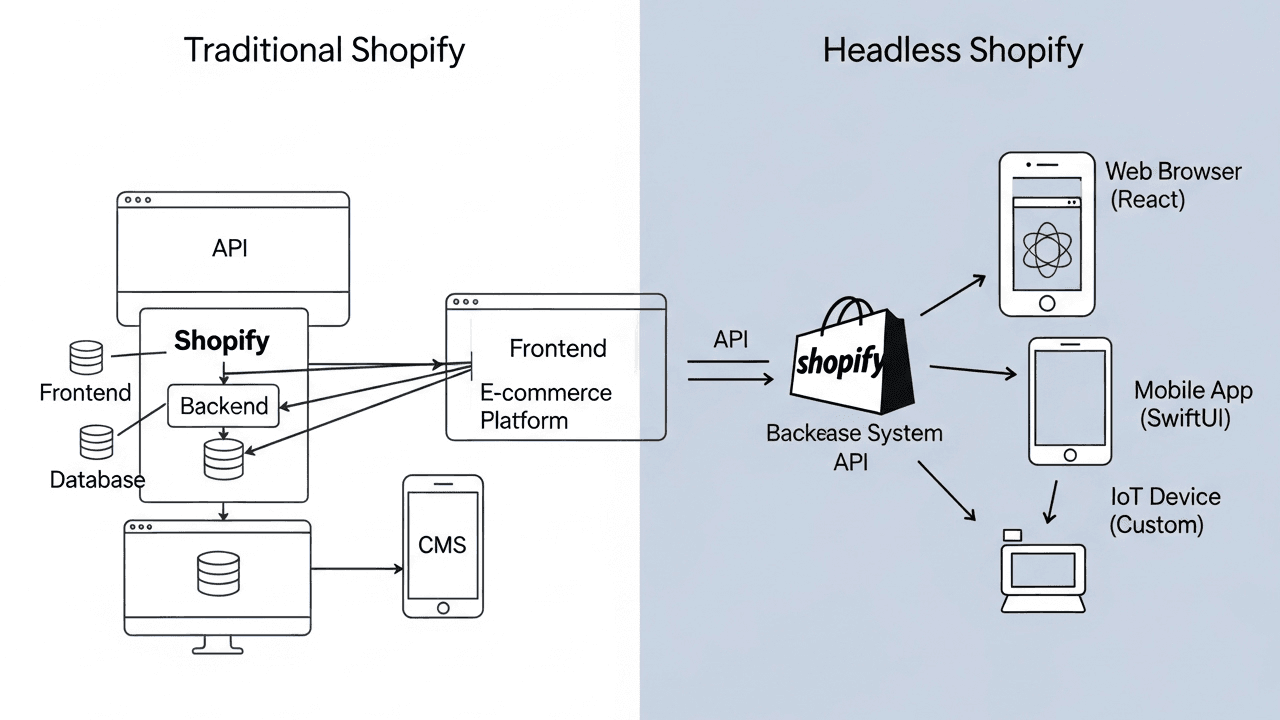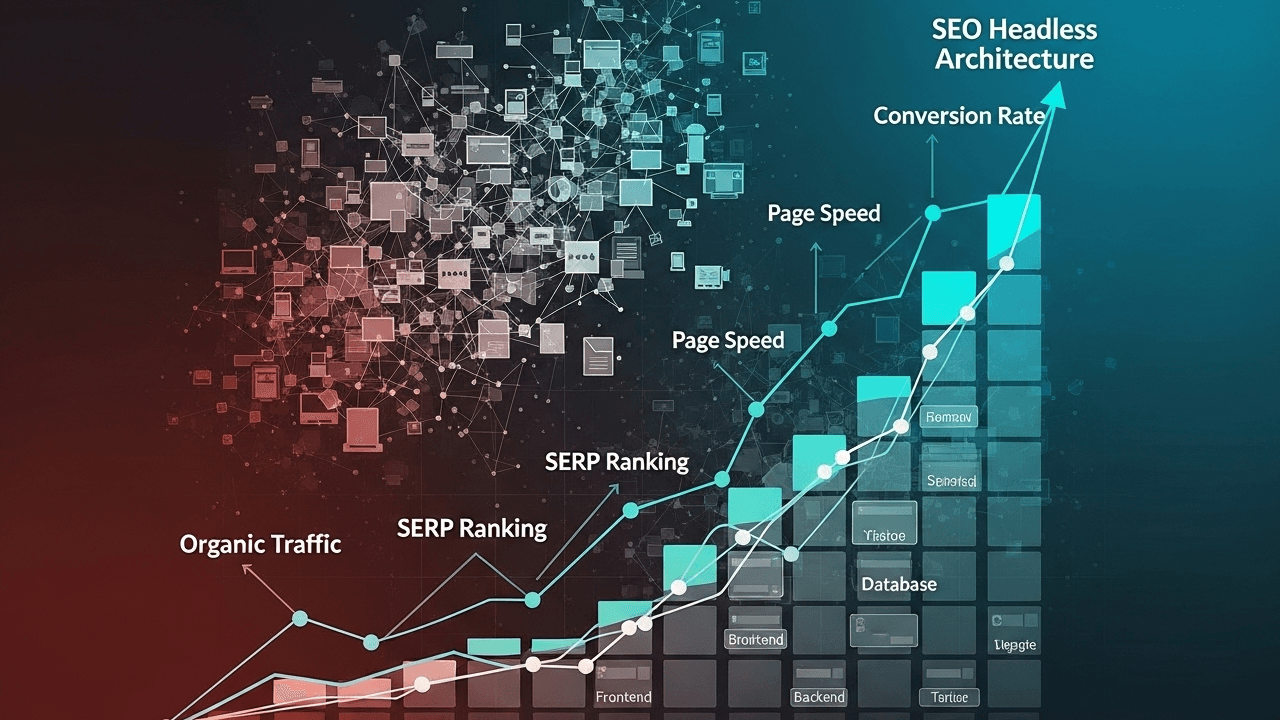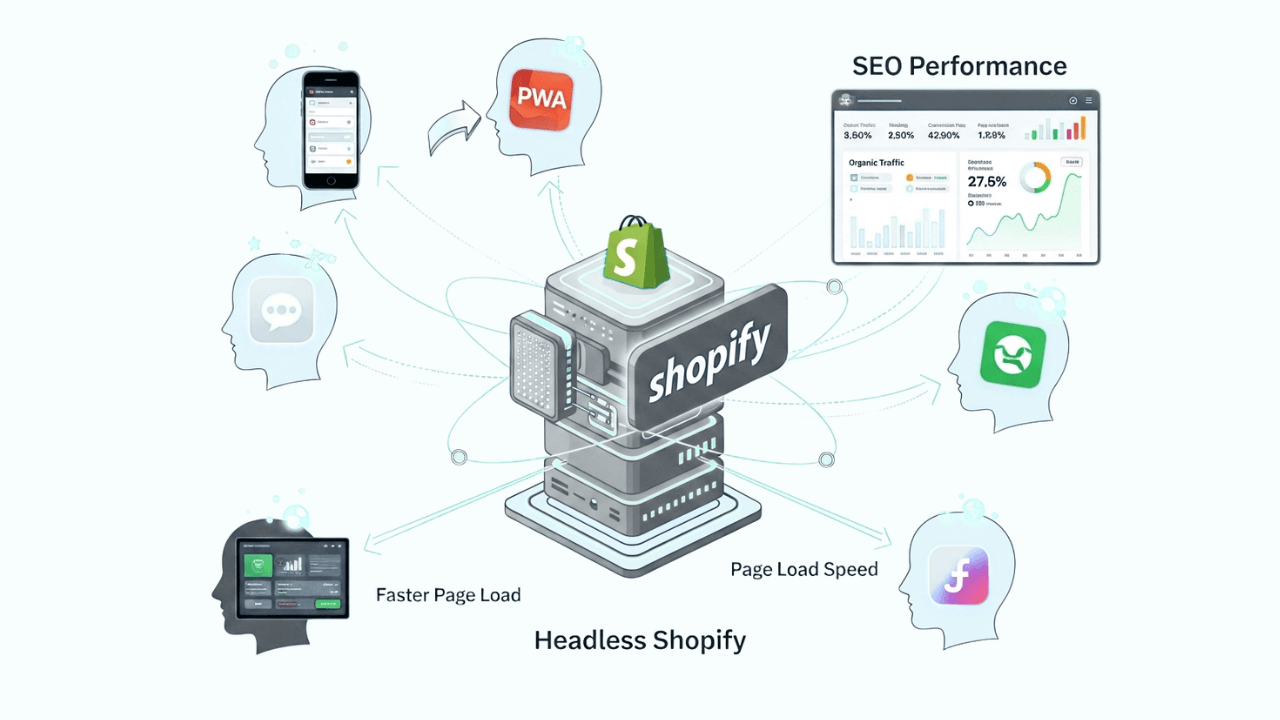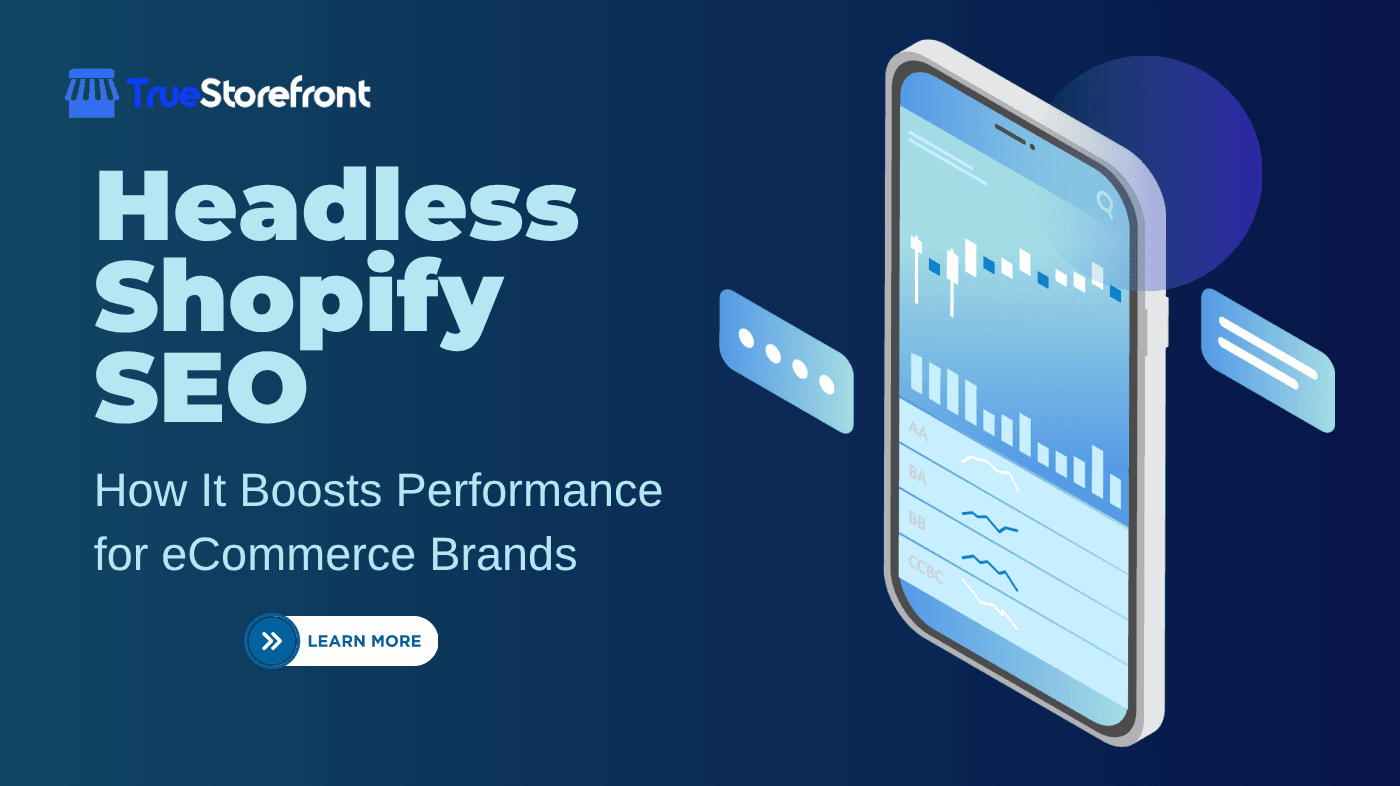In today’s competitive eCommerce landscape, search engine visibility is the key driver of sustainable growth. However, as online stores evolve with richer designs and complex user experiences, maintaining SEO efficiency becomes increasingly challenging.
Enter Headless Shopify - a cutting-edge solution that decouples the front-end presentation layer from the Shopify back-end. This modern architecture empowers eCommerce brands to deliver lightning-fast, personalized, and search-optimized experiences without the traditional technical limitations of monolithic systems.
But how exactly does Headless Shopify boost SEO performance? Let’s explore the technical and strategic advantages behind this innovation.
I. What is Headless Shopify?
Headless Shopify refers to separating Shopify’s back-end (where you manage products, inventory, and orders) from the front-end (what users see and interact with).
 Instead of relying on Shopify’s Liquid templates, brands use frameworks like Next.js, Nuxt.js, or React to build custom front-ends that communicate with Shopify through APIs.
Instead of relying on Shopify’s Liquid templates, brands use frameworks like Next.js, Nuxt.js, or React to build custom front-ends that communicate with Shopify through APIs.
This decoupled setup brings flexibility, speed, and scalability—three critical factors for search engine optimization (SEO) and user engagement.
II. Why SEO Performance Matters in eCommerce
For eCommerce businesses, SEO is more than just rankings—it directly impacts:
- Traffic & Conversion: Organic traffic delivers long-term value and higher conversion rates.
- User Experience: Google’s Core Web Vitals measure how quickly and smoothly users interact with your site.
- Revenue: Studies show that a 1-second delay in page load time can reduce conversions by up to 7%.
A headless approach helps overcome performance bottlenecks that traditional Shopify stores often face when scaling or integrating new features.
III. How Headless Shopify Enhances SEO Performance
3.1. Blazing-Fast Page Speed
Headless storefronts are typically powered by modern JavaScript frameworks optimized for speed. With static site generation (SSG) or server-side rendering (SSR), content is pre-rendered and served instantly to users.
SEO Impact:
- Improved Core Web Vitals (LCP, FID, CLS)
- Lower bounce rate
- Higher crawl efficiency as Google can easily load and index your content
Example: A headless Shopify store built with Next.js can load 2–3x faster than a traditional Shopify theme.
3.2. Enhanced Content Flexibility for SEO
Traditional Shopify themes limit how dynamic content is displayed. In contrast, headless setups allow marketers and developers to integrate headless CMS platforms like Contentful, Sanity, or Strapi.
SEO Impact:
- Ability to create custom landing pages optimized for specific keywords.
- Improved metadata control (titles, descriptions, Open Graph, etc.)
- Easier content localization and multi-language optimization.
This flexibility empowers marketing teams to update content rapidly—without waiting for development cycles.

3.3. Better Control Over Site Architecture and URLs
In traditional Shopify, certain URL structures and sitemap configurations are fixed. Headless setups, however, enable custom routing and URL control, which means:
- Clean, SEO-friendly URLs
- Fully customizable sitemaps
- Improved internal linking structures
SEO Impact: arch engines can understand and index your pages more efficiently, boosting your site’s authority and relevance.
3.4. Seamless Integration with SEO Tools and APIs
Headless Shopify supports direct integration with third-party SEO tools through APIs, including:
- Schema markup generators
- Dynamic XML sitemaps
- Canonical tag management
- A/B testing and analytics platforms
SEO Impact: More accurate data tracking and faster implementation of technical SEO updates.
3.5. Improved Mobile SEO Performance
With mobile traffic accounting for over 60% of eCommerce visits, a mobile-first experience is critical. Headless architectures make it easier to deliver progressive web apps (PWAs) that load fast, work offline, and enhance engagement.
SEO Impact:
- Higher mobile usability score
- Better Core Web Vitals performance on smartphones
- Increased conversion rate on mobile devices
3.6. Enhanced Security and Stability
Headless Shopify leverages API-driven connections, which reduce dependency on plugins or heavy theme scripts that can slow down your site.
SEO Impact:
- Fewer errors and downtime
- Reduced risk of security vulnerabilities (which can affect Google rankings)
IV. Real-World Example: Headless Shopify in Action

Imagine a growing DTC (direct-to-consumer) brand using Headless Shopify with Next.js and Contentful:
- The website loads in under 1.5 seconds.
- Content updates (blogs, landing pages) go live instantly without developer assistance.
- Organic traffic increases by 40% within three months due to faster indexing and improved keyword optimization.
This showcases how Headless Shopify can translate technical performance into measurable SEO success.
V. Challenges and Considerations
While the benefits are clear, businesses should consider a few factors before transitioning:
- Higher initial development costs
- Complexity in maintenance (requires skilled developers)
- Dependence on multiple platforms (CMS, API layers, hosting)
However, these challenges are outweighed by the long-term scalability, flexibility, and SEO performance gains.
VI. Future of SEO with Headless Commerce
The future of SEO lies in speed, personalization, and automation. Headless commerce; especially Headless Shopify - aligns perfectly with these trends.
As search algorithms increasingly prioritize user experience metrics, brands adopting headless architecture will maintain a competitive advantage.
Conclusion: Building an SEO-First eCommerce Experience
Headless Shopify is not just a technological upgrade, it’s a strategic evolution for eCommerce brands seeking sustainable growth through SEO.
By offering faster performance, reater flexibility, and enhanced content control, it empowers marketers to adapt swiftly to SEO trends and deliver outstanding user experiences.
If your brand’s goal is to dominate organic search, Headless Shopify provides the architecture to make it happen efficiently, intelligently, and at scale.
Read more:
